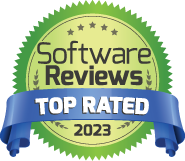Complete visibility with historical data
Carnival HQ needs to have eyes on the horizon at all
times. When a satellite link goes down, Pedro's team at HQ is in the dark about everything
happening aboard a ship. Between then and when the link is restored with the mainland,
Applications Manager fills in the gaps by continuing to record on–board performance stats. Pedro's
team can pull up historical data and stay in the know about what happened during the outage, so
there are no blind spots.
Root cause analysis
Carnival's IT used to be set up like a row of dominoes – one rogue element
would bring down several functions simultaneously, be it on board a ship that's out at sea or the inoffice
IT at mainland HQ. For example, an application with a runaway log or a runaway process
writing things indiscriminately would bring down services, causing application crashes resulting in
business downtime. Protocol kicks into action, i.e., someone calls the help desk, creates a P1 ticket,
and only then Pedro and team enter the fray. Tickets on the ships get acted on by the on–board IT
admin, whereas Pedro's immediate team members respond to tickets for the HQ office. Upon
investigation, all there is to be found, at least nine times out of ten, is that the application service is
down.
The ability to restart a service, Pedro says, has helped them a lot. And how quickly Applications
Manager accomplishes this task is what really stands out. "The good thing is that it is so fast, the
business doesn't know,” Pedro notes. “We don't really have noticeable business downtime [costing]
us money!"
Robust reporting establishes cruise control
Applications Manager equips Pedro and his team to
analyze enormous amounts of historical data. Carnival stores up to a year of historical data and
relies on trend reports, graphs, and easily understandable vital statistics reports. The actionable
intelligence helps make sense of all that data and helps report to management.
These comprehensive reports help Pedro analyze and identify patterns in IT performance
degradation, empowering him to plan for capacity and schedule maintenance in advance. This
preempts problems, thereby avoiding unwanted downtime for the business. If he's able to furnish
solid proof for why a certain resource like disk space on a server or a certain file cluster went down,
or goes down on a specific day and time, then engineering can back and check if it's just a capacity
issue or a genuine performance problem.
Capacity planning
Management typically raises requests for more capacity or more disk space.
Pedro is required by engineering to explain the requirement basis for any request. Before
Applications Manager, he usually wouldn't have an answer. A typical scenario where capacity
comes under the scanner is the “Monday morning rush–hour syndrome.” Every Monday morning,
practically everyone at Carnival wants to pull reports from all the different applications, e.g., Siebel.
This would be when load on capacity is at the very peak, and CPU utilization is close to 99 percent.
Delivering as promised
The other main business benefit of using Applications Manager
is SLAs – being able to meet them and preventing ticket incidents (referred to as “P1 events” in
their system) to reduce help desk calls. According to Pedro, before using Applications Manager, his
team would “get calls every other night.” Now, with the ManageEngine solution in place, he's seen
a “huge reduction of calls."
Troubleshooting
At Carnival, successful, timely troubleshooting comes down to historical data
available on hand and to narrowing down the parameters. In turn, the operations team can, say,
catch every network interruption, identify the exact minute when a server or application
is disconnecting, monitor processes by process ID, check availability, and see if any
resource actually went down overnight.
To sum it up, Applications Manager has proved to be invaluable in its contributions to Carnival's IT
management. Where day–to–day operations, capacity planning, historical performance analysis, and
troubleshooting are concerned, Pedro says, "We're very happy. The level of detail is so critical.
Because most of the times, the simplest of things can have the greatest impact." And for Carnival,
smooth sailing – for Pedro, his IT team, and the rest of the cruise line's business units – is the the
greatest impact made by Applications Manager.
Try out Applications Manager today for free at:
https://www.manageengine.com/products/applications_manager/download.html
For more information, please visit
http://www.manageengine.com
Follow our blog at
http://blogs.manageengine.com



























